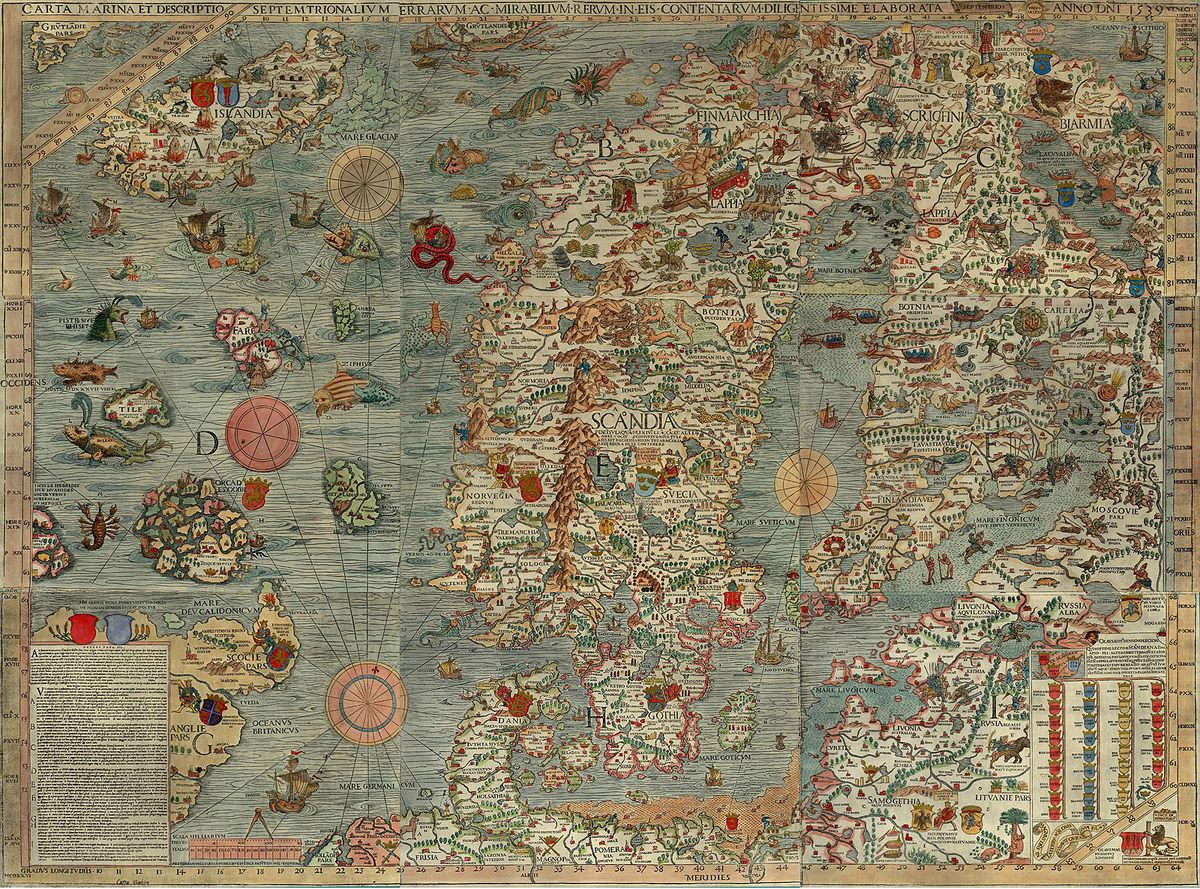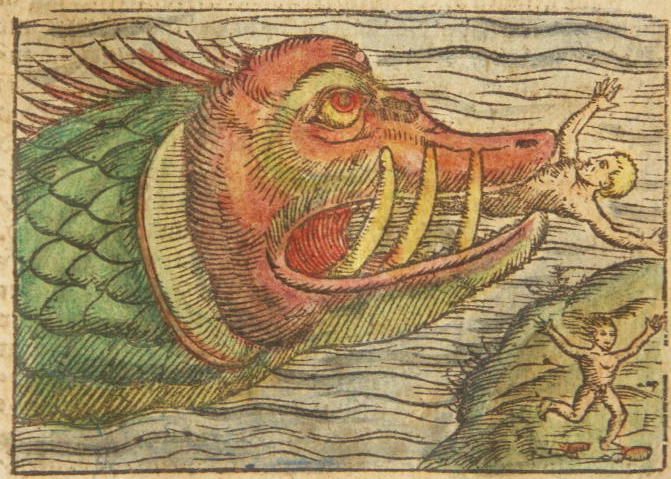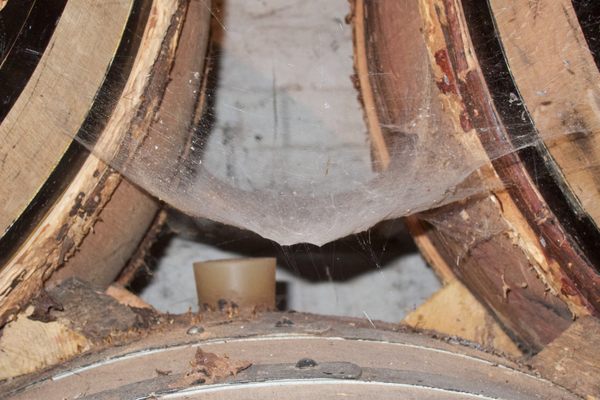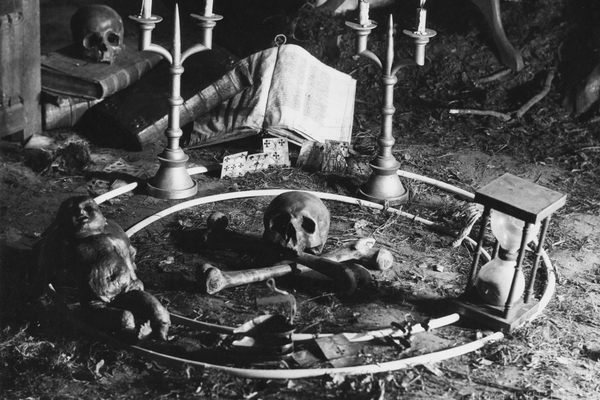The Modern Lives of Medieval Monster Scholars
It’s an interesting time to see the world through the eyes of blemmyes and demons.

There are certain subjects that, for many students, can be scary to talk about in the classroom. “If I were going to come in and say, ‘Today we are going to discuss religious discrimination,’ or ‘race relations in America,’ everyone would retreat into their corners,” says Asa Mittman, a professor of art history at California State University, Chico.
So if he does want his students to grapple with such topics, Mittman might instead begin a discussion about blemmyes, a monster taken very seriously by medieval scholars. “A blemmye is a headless person who lives in the Red Sea,” Mittman explains. “For scholars at the time, there were two important questions about blemmyes: Can they be converted to Christianity? And if they were, would they grow heads?”
Such are the problems considered by MEARCSTAPA, a group of scholars founded by Mittman in 2007. MEARCSTAPA, which stands for Monsters: the Experimental Association for the Research of Cryptozoology through Scholarly Theory And Practical Application, is committed to the study of medieval monsters—where they came from, what they can tell us about the people who dreamed them up, and increasingly, what lessons they might still offer today.

There are a few dozen active members of MEARCSTAPA. They collaborate on projects—panels about flaying and disguised demons; books about sea monsters and serial killers—and gather at medieval conferences. The group’s name is a purposefully ridiculous acronym, but it is also a word from Beowulf, coined to describe the monster Grendel, which translates to “border-walker” or “margin-stepper.”
“It’s this great word that describes monsters writ large, as very many of them are at the edges of things,” says Mittman.
MEARCSTAPA’s stated focus is the Middle Ages and early modern period, and most of the scholarship it has produced is focused on those eras. But “a lot of what we do is more relevant than it might seem,” says Mittman, who defines monster scholarship as “the study of how individuals and groups—particularly powerful groups—dehumanize, disempower, and ultimately attempt to destroy other groups.”
Thus the continuing relevance of, for example, blemmyes: a group of monsters whose change in religion, it was thought, might cause a change in physicality. If you follow this line of thought through to its conclusion, he says, “you wind up with perspectives about who is and who isn’t able to belong to a religion and who is and who isn’t a legitimate member of a nation—a citizen—based on race.”

For MEARCSTAPA members, monster-hunting can often mean pinpointing what a group of people is afraid of, and looking for manifestations of it. “You get monsters that speak to the particular anxieties of cultural moments,” says Mittman. For example, in the 1950s, as McCarthyism swept through the United States, horror movies focused on body-snatchers and other disguised extraterrestrials. The sexually repressive Victorian era gave us vampires, which remain anything but. For this reason, Mittman says, certain current crazes were eminently predictable to those in the know: “You say, ‘Oh, the economy’s going down,’” he says. “‘We’re going to have zombies again.’”
Sometimes, monsters can be spotted in less obvious manifestations. Watching newscasters talk about this year’s hurricanes, Thea Tomaini—a professor of English at USC Dornsife, and a member of MEARCSTAPA’s executive board—was struck by how blatantly we demonize them. “They’re given names, they’re given personas,” she says. “Every single time, you see the news outlets referring to them as monster storms.”
This is also true, she says, of the larger problem of climate change. As people grapple with its causes, and try to figure out what can be done about it, Tomaini is reminded, she says, of a much older line of questioning: “Why has the monster come to us? Who has sent the monster, and why? What does the monster want?”

Problems can also arise when people disagree on who the real monsters are. Such confusion reminds Mittman of another beastly medieval staple: the false prophet, often depicted as a frightening, many-headed creature. Of course, to the people following him, he doesn’t look frightening at all. “It would be wonderful to have good, comforting monsters—the kind where you can look at it, see its fangs and horns, and have everyone agree, ‘oh, we should fight that,’” says Mittman. “But that’s not where we are.”
Recently, MEARCSTAPA has been grappling with this particular type of monster close to home. As white supremacists have begun using medieval imagery to signal their devotion to an imaginary, racially homogenous past, the field has found itself divided over whether and how to condemn these associations. “Medieval studies is kind of on fire about this,” says Mittman. “It has gotten people to show where they really stand on these issues, and that has sometimes been monstrous to see.”
MEARCSTAPA sees this controversy as an opportunity to put their expertise to work, and they are hosting a session about it, called Monstrous Medievalism, at next year’s International Congress on Medieval Studies.

When MEARCSTAPA first formed, monster scholarship “was treated like a kooky endeavor,” says Tomaini. “If you said ‘I work on monsters’ in a job interview, you might not get very far. But over the past ten years, interest in monster studies has really grown.” Mittman agrees: “Now it’s a totally standard normal part of the field,” he says. Two years ago, when he was on his way to a conference, a fellow scholar asked him about his focus. “I told her with much more confidence,” he says. “And she sighs dramatically, and she says ‘Monsters! That’s all anybody works on!’”
Explaining their jobs to those outside the field is still difficult, though. “When I’m at a cocktail party, and I’m asked ‘What do you do?’, you should see people’s faces,” says Tomaini. Monsters may change, but some things stay the same.



















Follow us on Twitter to get the latest on the world's hidden wonders.
Like us on Facebook to get the latest on the world's hidden wonders.
Follow us on Twitter Like us on Facebook